5 Vegetable Plants That Are Ideal for Small Gardens — So You Can Grow-Your-Own in Even a Tiny Yard
Don't let a small yard stop you from cultivating your very own farm-to-table vegetable patch. These vegetables are perfect for growing in small spaces
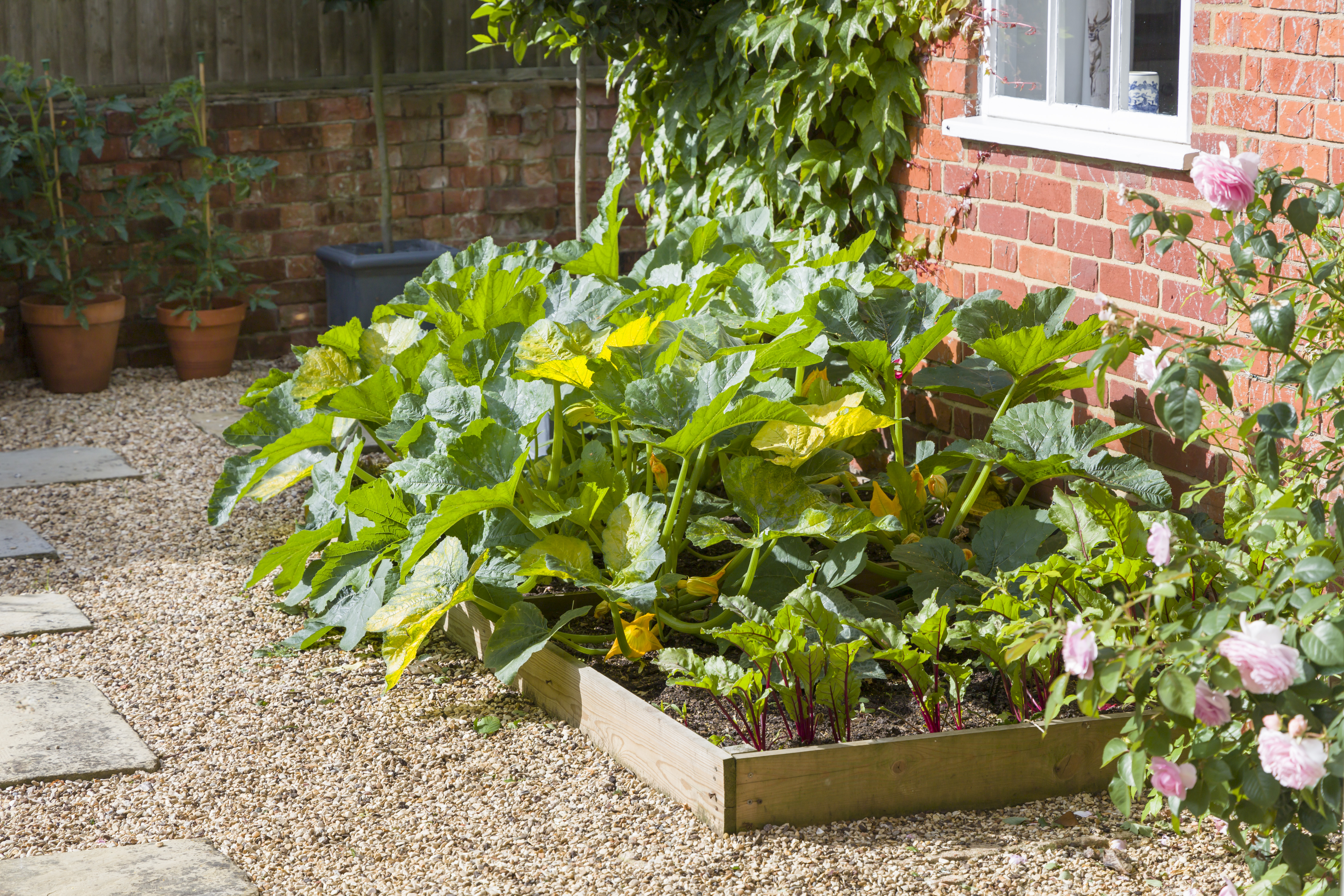
Dreaming of a homestead lifestyle but stuck in the big city? Listen up. When it comes to slow-living and farm-to-table eating, we’ve decided we simply have to get a slice of this idyllic lifestyle, no matter how small our yards are.
Turns out, it might be easier than you think to start your own small vegetable patch. According to our expert, you can start growing your own vegetables right from your balcony – you can even reuse plastic food containers! All it comes down to is choosing the right small vegetable garden plants for your location and skill level.
Don’t be put off if you’re green thumb is notoriously absent either. Many small vegetable garden ideas are suitable for even the most inexperienced gardeners – music to our ears! Grab a bag of compost and get ready to feel like a total Martha Stewart, because balcony veg growing is officially on the cards!
1. French Breakfast Radishes
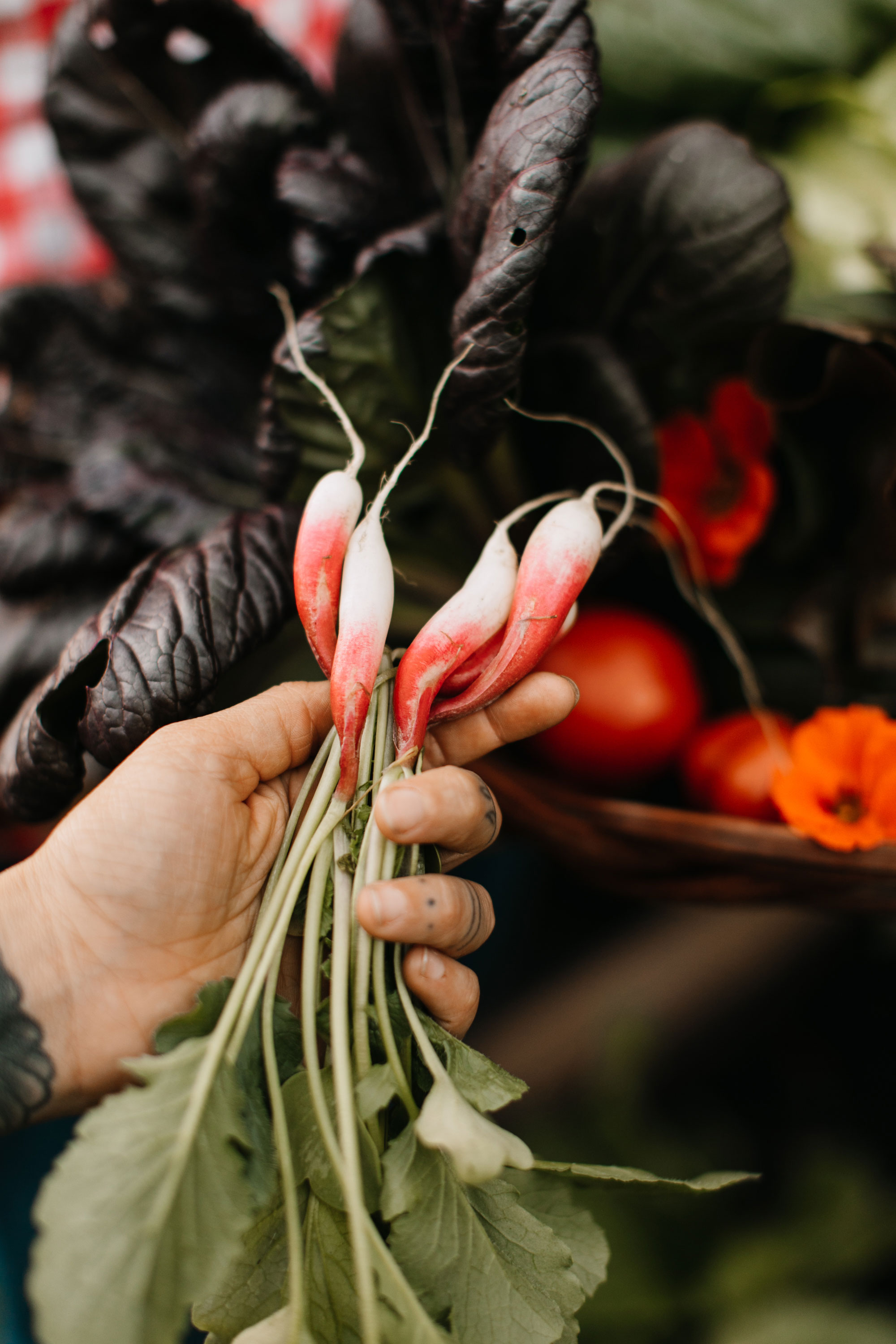
But before you grab the first pack of seeds you see, it pays to do a bit of research. Luckily expert Crystal Jarvis from Lettuce Grow Something is on hand to give her top picks for your climate. First up: radishes!
If you’re based in an area with relatively cool weather, Crystal thinks these little crunchy salad vegetables are perfect candidates for growing in a smaller yard or as a balcony idea. Plus if you’re not known for your horticultural patience, these tiny vegetables are super speedy growers!
"Radishes are ready to harvest from seed in just 28 days," says Crystal. "They grow best in cool weather where average highs are around 65°F. They can tolerate a light frost but if colder then I suggest covering them with frost cloth."
Be sure to position your radish plants in a sunny area though. Crystal explains "Radishes need at least 6-8 hrs of sun and grow best in good organic soil that drains well. When planting, space the radish seeds every 3-4 inches and then harvest when they look like a radish you want to eat!"
Don’t be tempted to leave them too long though, Crystal warns. "Don't let them get too big or they won't taste good!" The ideal size for radishes should be around an inch in diameter — roughly the same size as a dollar coin.
Crystal’s favorite variety is French Breakfast radishes, which you can pick up seeds for from Walmart. With its bright pink skin and elongated shape, this heirloom radish is perfect for salads. Try roasting them in a moderate oven for 20 minutes for a delicate flavor that’s perfect for warm salads!
2. Butterhead Lettuce
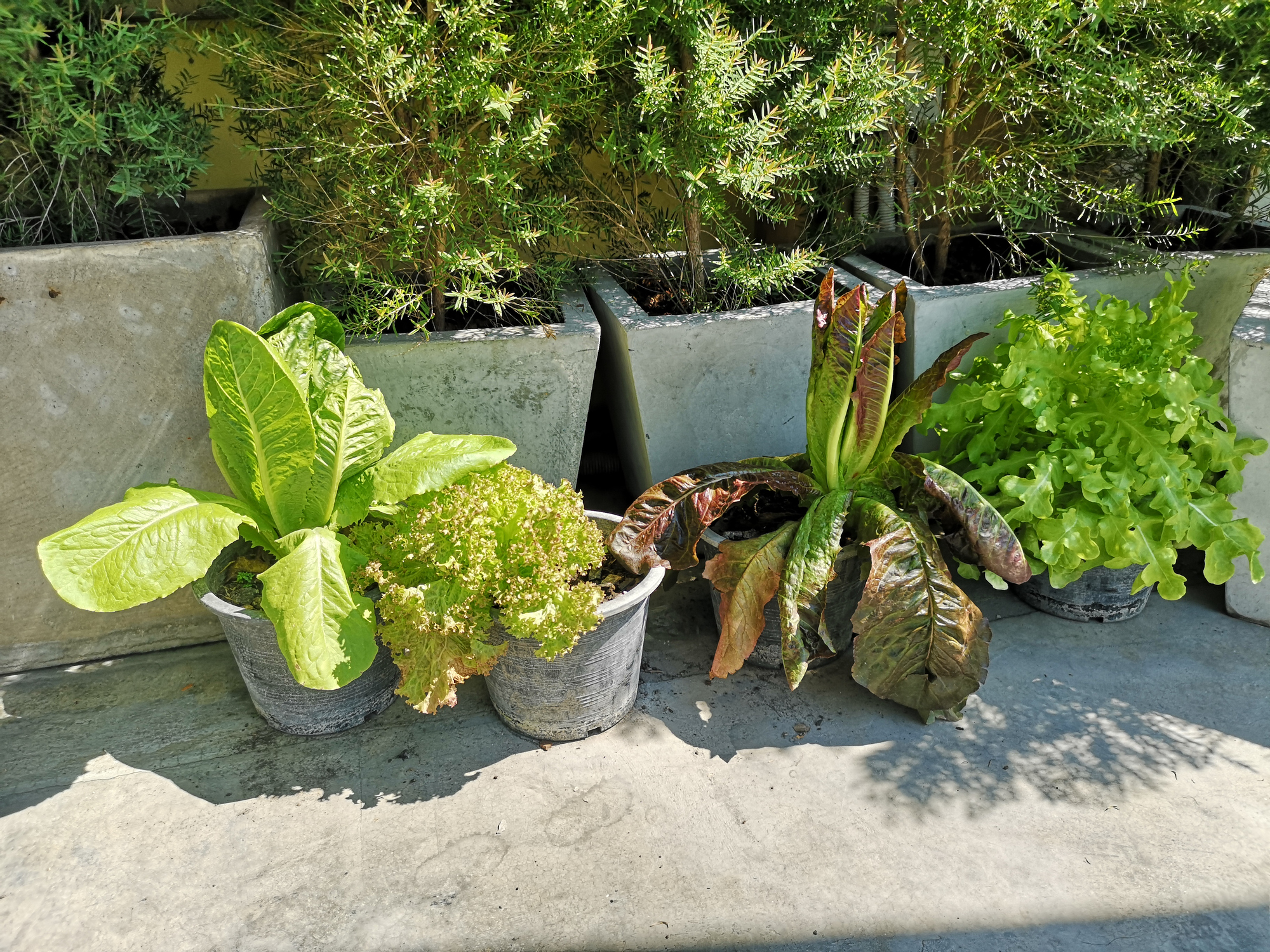
"Lettuce is great for vegetable container gardening beginners as you can grow quite a bit in a small space," says expert Crystal. In fact, we’ve had success growing smaller varieties of lettuces in old plastic food boxes (just be sure to put some drainage holes in).
"Jade Gem" and "Garden Babies" Butterhead Lettuce (the latter of which we found seeds for at Renee's Garden Seeds) are two of Crystal’s favorite varieties for growing in a small yard — they do great in containers too if you’re looking to expand your veg garden on to your hardscaping or balcony.
Super simple to plant, Crystal says "These lettuce varieties are best planted in containers filled with rich organic soil that drains well and that are at least 9 inches deep. Plant the seeds 6 inches apart to allow room for for growth." If you’re short on yard space, these varieties also do great in deep hanging baskets or narrow floor troughs.
The key to growing a deliciously sweet and crunchy lettuce? Timing your harvest.
Lettuces are quick growers and harvesting them even a day too late could turn those deliciously sweet leaves bitter. Vegetable expert Crystal says "Lettuce grows best in cool weather, as if it gets too warm they will bolt and taste bitter, but they also don't like freezing temperatures as well! To harvest your lettuce, remove the outer lettuce leaves as needed and your lettuce will continue to grow more leaves to harvest each week."
3. Arugula
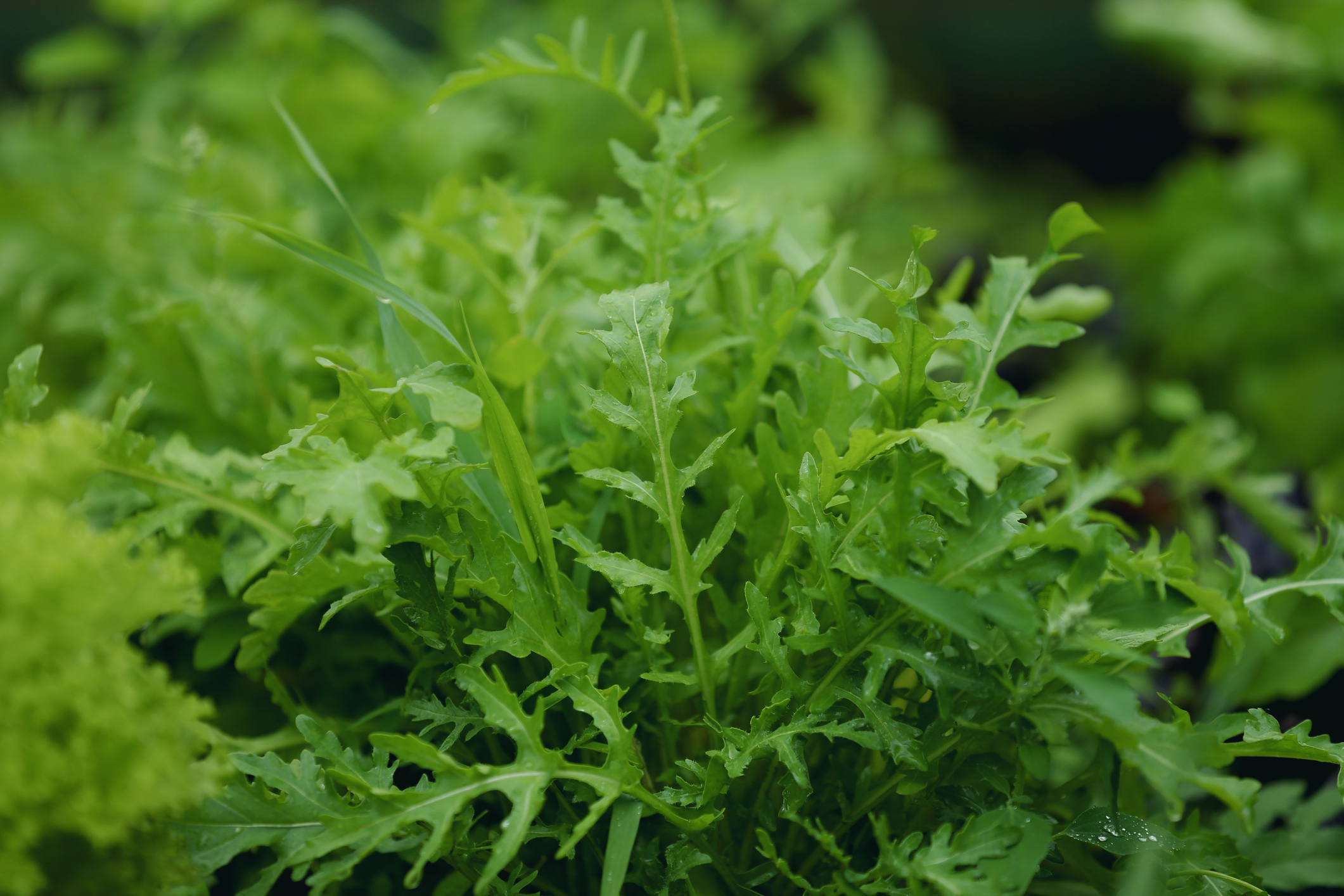
Scatter it over a pizza, pair it with parmesan shavings, or smother it in a delicious balsamic glaze – is there any dish arugula can’t improve? Having well-earned its place in the salad hall of fame, Crystal thinks Argula should be at the top of every home grower’s list, and we couldn’t agree more. Plus, with its pick-as-you-go nature it’s perfect for small backyards and containers.
"Arugula does well in both cool and warm weather. I am able to grow arugula in 95°F temps here in Austin, Texas. Plus it is easy to grow from seed in small containers," says Crystal. "For all plants I suggest keeping soil moist like a wrung out sponge – but not soggy! This helps with seed germination and the overall growth of the vegetables. Growing in containers can be a bit trickier as they dry out faster, so you have to keep an eye on them."
The rules for planting and harvesting arugula in small spaces are super easy and follow the same footsteps as lettuce — making them a great pair to make up your salad leaves! Crystal explains "Arugula does best with at least 4 hours of sunlight and in a container that is at least 9 inches deep with well-draining soil that is rich in organic matter. Plant the arugula seeds every 4-6 inches apart, and harvest out leaves as needed to add to your recipes, rather than removing the whole plant."
Don’t forget, arugula flowers are edible as well, and they go great in a salad! Try these heirloom arugula seeds from Burpee for your veg patch.
4. Fingerling Potatoes
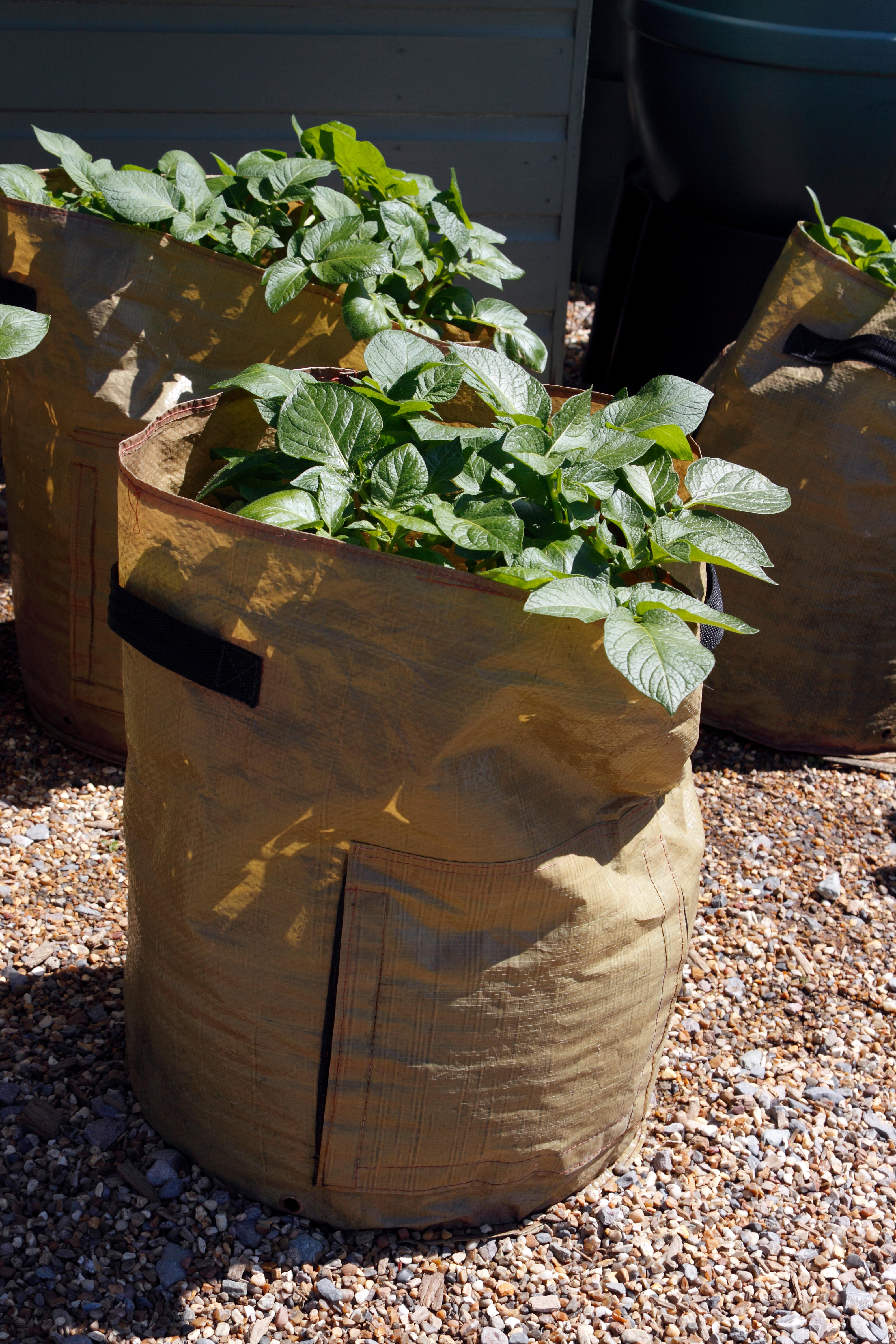
Already aced growing tomatoes in containers? Looking for a more advanced small vegetable to challenge your skills? According to expert Crystal, potatoes should be your next port of call, and the smaller varieties are perfect for small yards!
For this tasty vegetable to thrive, you’re going to need to put in a bit of prep work. But trust us, it’s worth it!
To start the process of growing potatoes in containers, Crystal says "Start with seed potatoes from a seed company, any medium size potato variety will work, such as Red Norland, Yukon Gold or Fingerling potatoes. To encourage the seed potatoes to grow sprouts, place them in an area with indirect light – this is called chitting. Once the potatoes have sprouted, cut them into pieces so each piece has at least one sprout. Let these pieces dry for two to three days then plant in a container that is at least 12 inches deep." If you’re looking for a cost-effective container that’s easy to move around a smaller yard or balcony, repurposing old flexible tubs or buckets is a great solution. Just make sure you add plenty of drainage holes so the soil can drain freely.
"Place the cut potato pieces 6 inches below soil at 8-10 inches apart and keep the plant well watered. You’ll know when to harvest the potatoes when the leaves are dying or lying down, but you can always harvest earlier for young potatoes," says Crystal.
Be sure to watch out for pests and diseases with your potato plants though. They can be extremely susceptible to a disease called Blight, which can spread quickly if your plants are close together. Allow good ventilation between your potato plants and keep an eye out for the first signs of blight or pests.
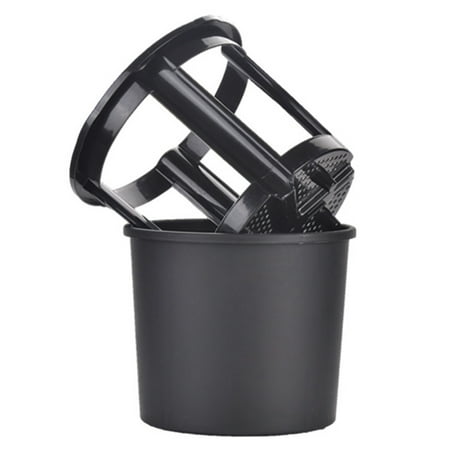
Price: $29.94
This clever growing pot lets you keep a close eye on the progress of underground growers like potatoes and carrots.
5. Cosmic Purple Carrots

No veg garden is complete without a carrot patch, even the smallest of yards. With varieties like Cosmic Purple thriving in containers, there’s nothing stopping you from growing these delicious vegetables straight from your patio.
Much like potatoes, Crystal says carrots require deep sowing in order to fully thrive. "Carrots require deep, nutrient-rich, well-draining soil. For the best results, pick a container that is at least 9-12 inches deep and located in a nice sunny spot which receives 6 to 8 hours of sunlight a day."
When you’re ready to plant your seeds, Crystal advises to "sow them 1/4 inch deep and 4 inches apart. Make sure to thin the sprouted seeds to 4" apart if you have some seeds that sprout closely together. When the top of the carrot reaches around 1/2 to 1 inch in diameter, it’s ready to harvest."
With so many different colors available, carrots are fantastic for getting experimental and branching out into new and exciting varieties. Gardening expert Crystal’s favorite is Cosmic Purple, an heirloom variety with bright purple skin and orange flesh. This variety is also a speedy grower, reaching maturity from just 60 days!
Which vegetables can I grow in small pots?
If your small yard is bursting at the seams with plants and flowers, don’t panic. If you can squeeze in a small pot, then a petite vegetable garden is still in reach! You’ve just got to get savvy with your veg choices.
One of the best picks for small pots are plants with small root systems like peas and beans. A favorite variety of ours is the “Half Pint” pea plant. Producing an abundance of full-sized pea pods on a mini plant, it’s perfect for yards that are short on space – they’ll even do well on a windowsill. Plus they're ready to harvest just 7 weeks from sowing.
If you’re after something more on the spicy side, chilli pepper “Prairie Fire” is a great vegetable for small pots or windowsills, especially in hotter climates. Compact in its growing habits, these fascinating chillies first appear purple, before then ripening to an intense dark red hue. Keep them watered regularly and support the plant as the fruit develops, and you should be ready to pick your chillies in just 22 weeks!
Be The First To Know
The Livingetc newsletters are your inside source for what’s shaping interiors now - and what’s next. Discover trend forecasts, smart style ideas, and curated shopping inspiration that brings design to life. Subscribe today and stay ahead of the curve.
Matilda Bourne is a freelance homes, gardens and food writer, stylist and photographer. Known for creating and capturing content for multiple international brands, her work has been featured in The Telegraph, The Daily Mail, and Hello! magazine. When she’s not writing, you can usually find her tending to her much-loved garden and scouring thrift stores for vintage furniture.
-
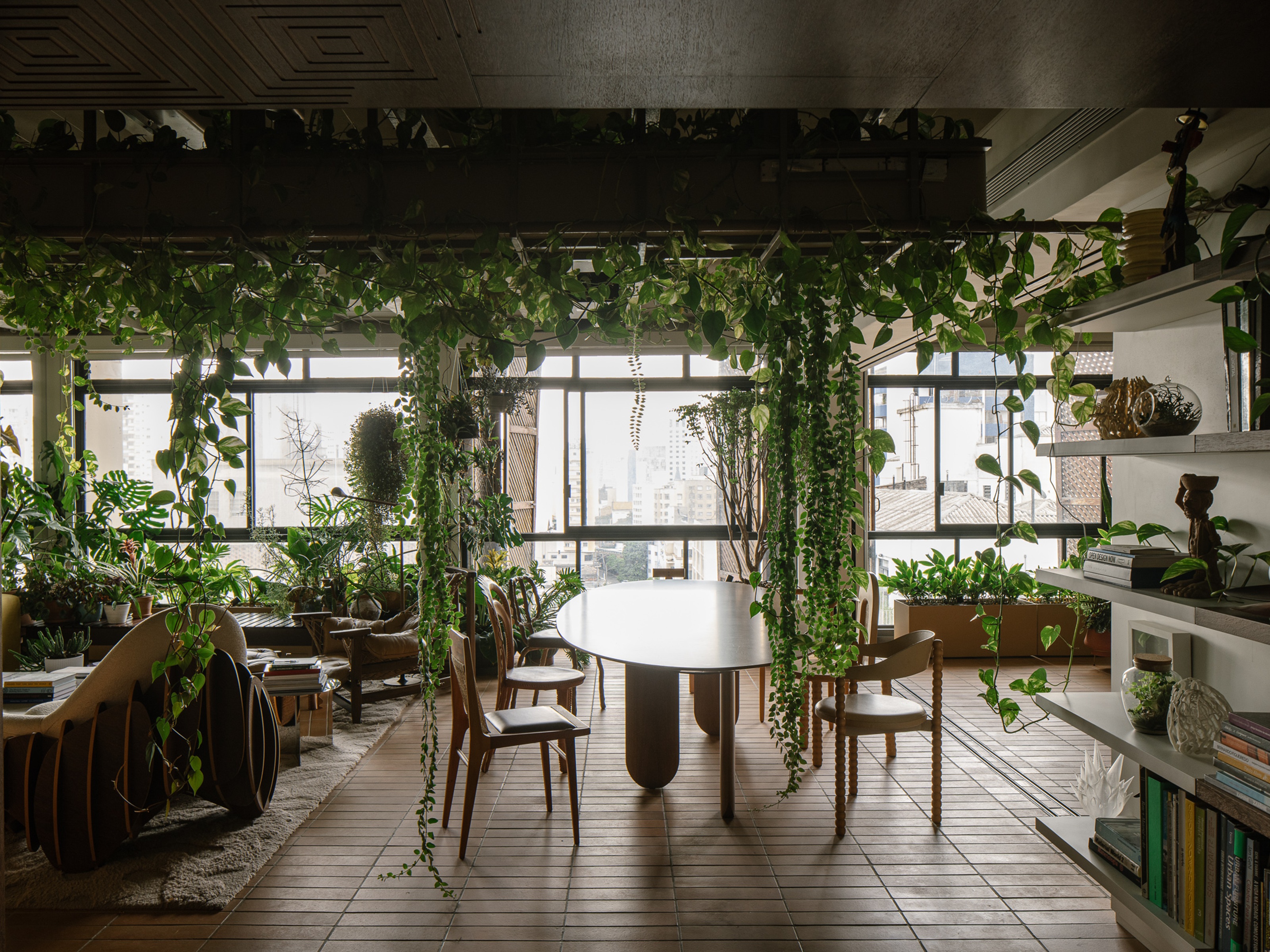 What Is Biophilic Interior Design? I'm an Actual Biophilic Designer, and This Is How to Apply It to Your Home
What Is Biophilic Interior Design? I'm an Actual Biophilic Designer, and This Is How to Apply It to Your HomeA biophilic designer explains the core principles of this practice, and the easy ways you can apply it to your home's design
By Marianna Popejoy
-
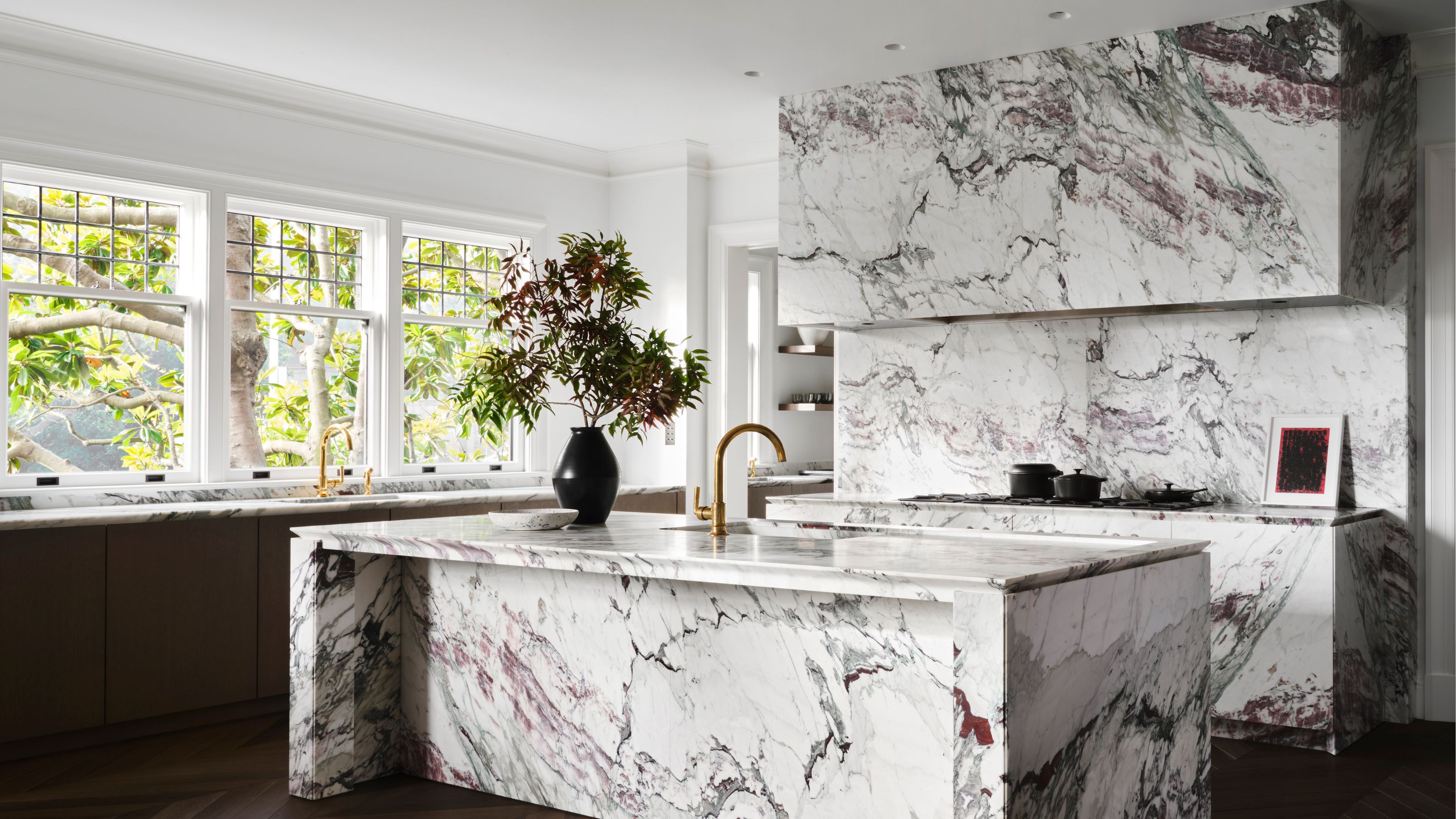 5 Kitchen Stone Trends We’ll See in 2025 — Experts Highlight the Show-Stopping Finishes Taking Center Stage
5 Kitchen Stone Trends We’ll See in 2025 — Experts Highlight the Show-Stopping Finishes Taking Center StageLet’s be honest: there’s nothing more lasting and versatile for kitchen surfaces than stone. These are the timeless choices you should make in 2025
By Aditi Sharma